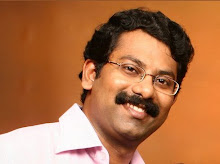 Vaastu Shastra is often confused with Chinese Fengshui. But now with the cultural globalization, the Chinese Fengshui has also entered Indian homes, and now we see people changing their house arrangements, sleeping positions, and you see Toads, Laughing buddha's, and other similar things like fortune bamboos and wind chimes in place of Indian Gods like Godess of Wealth - Mahalakshmi, God of Destruction of Difficulties - Ganesha and so onnn...
Vaastu Shastra is often confused with Chinese Fengshui. But now with the cultural globalization, the Chinese Fengshui has also entered Indian homes, and now we see people changing their house arrangements, sleeping positions, and you see Toads, Laughing buddha's, and other similar things like fortune bamboos and wind chimes in place of Indian Gods like Godess of Wealth - Mahalakshmi, God of Destruction of Difficulties - Ganesha and so onnn... Now, the recent days have seen much debate between these two ancient Shastras or simply put as Sciences. The Fengshui camp have been mud slinging Vastu shastra by saying it to be very old fashioned, and outdated. While the Vastu has been saying Fengshui to be unorthodox, and unusable.
Vaastu Shastra emerged in India about 6000-3000 BC, and it is mentioned in the ancient scriptures like the Vedas, and even Epics of Mahabharata, and Ramayana. The Ancient Indian Architecture was built on these very guidelines of Vaastu Shastra, may it be Temples or Palaces. The inner peace or "Shaanti" you feel while in any of those old temples comes from the vibrations you would acknowledge whilst in those places. Its all due to Vaastu which literally means "To Live".
The Origins of Fengshui, is pretty recent compared to Vaastu, and is supposed to be penned during the Han Dynasty - about 900BC to 25AD or so.
Vastu Shastra is based on the five basic elements of the universe in which we all live (All Free). These basic elements are Akash (Ether), Prithvi (EARTH), Paani (WATER), Agni (FIRE), and Vayu (WIND). Akash is usually mistaken as Sky the literal meaning while in Vaastu it refers to Ether or a combination of earth's Magnetic field & Sun's Rays.
Fengshui means Wind & Water. It makes use of another set of five elements - earth, fire, water, wood and metal.
Both the sciences relates to the same Idea - living in harmony with the environments and seeking equilibrium with it. But, Vastu and Fengshui Operates very differently in the way to achieve it. Might be due to the fact that they have originated in two geographically and culturally different areas, and different times.
I'm a Big fan of Vaastu Shastra than Fengshui, might be because that made more sense, and felt the effects of the same. All Vaastu rules are very much scientifically explainable, and really makes Technological sense.

Some Tips From Vaastu
- The main entrance should be in the East or North but it should not be in front of the compound wall.
- The wall of the house in the North-Eastern side should have minimum height.
- If the wall of the house in the East is tall, it stalls the entry of prosperity, the Goddess Lakshmi, into the house. Therefore, it should be small in height.
- The southern side of the house should be as tall and heavy as possible.
In any room of the house the beam or column should not cross in the center. - Terrace or balcony in the house should be either in the East or the North.
- A well, pole or a temple should not be there in front of the main entrance of the house.
- The slope of the house should be towards East, North or North-East.
Similarly, the slope of the plinth also should be towards East, North or North-East. - The height of the plinth should be maximum in the direction of South-West.
- The main entrance of the house should not be in front of that of the opposite house.
- The house should be equipped with the protective wall.
- The upper storeys of the house should be constructed on the Southern or Western part.
- The Master bedroom should be in the South-West, and should not be used by children
- The cupboard in the wall should be the Southern or Western part direction of the house.
Head to North
The Vastu sleeping position with head in the North direction is strongly opposed. Never sleep with the top of your head pointing to the north and feet pointing to the south. Brings terrible dreams and disturbed sleep. It brings negative vibrations while you sleep. Loss of sound sleep pertains to irritability, frustration and emotional instability. So your physical and mental health will suffer. In fact only a dead body is kept with the head pointing the North and the feet towards the South.
The Science - The blood in the body contains iron (Haemoglobin - Hb or Hgb)), making the body magnetic with the positive polarity in the head. So its supposed that head represents the North pole while the feet are the South pole. When you sleep with your head to the North, these two positive polarities repel each other, disrupting the flow of blood and affecting your sleep and health. Hence one should never sleep with the head in the North.
South:
Vastu Shastra highly recommends this direction as your usual sleeping position with head towards the South. This is believed to provide sound sleep & health and increases the wealth and prosperity in the household. Sound sleep tends to develop better will power, calm mind, and so better behavior.
East:
East is the direction of knowledge and enlightenment; from where Sun rises. Sleeping with head resting in the East enhances memory, health and spiritual inclination. It is usually advised by Vastu Shastra Consultants to plan the children's room in such a way that their Vastu sleeping direction comes out to be east. This leads to higher concentration and retention power.
The Science - Early morning Sun's rays are proved to be beneficial to one's health. It helps production of Vitamin-D which helps in absorption of Calcium and Phosphates. This inturn helps better brain development.
West:
Sleeping with one’s head in the West is good for people who do not permanently reside in the house, like guests and married daughters, in their parents’ house. Though this is not a very advisable sleeping position, Shastra says sleeping with head towards West might cause disturbed sleep due to nightmares, or kinds of illness and tendency towards violence.
A small E-book which would help understand Vaastu Shastra is here for Download
Based on Articles from
- http://www.experiencefestival.com/a/Vastu_and_Feng_Shui/id/2067
- http://www.stephen-knapp.com/vastu_shastra.htm
- http://architectureideas.info/2008/11/vastu-shastra-guidelines-bedrooms/





